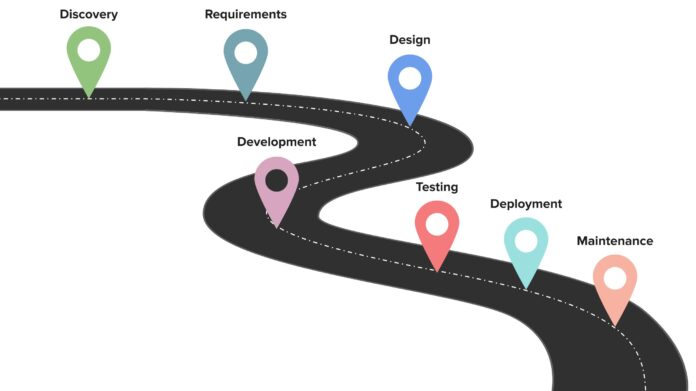Most people think that projects just happen-that there’s no real planning or forethought involved. But the truth is, if you want your project to succeed, you need to take the time for a discovery phase.
This is the time when you figure out what you want to achieve with your project and how you’re going to go about achieving it.
Without a discovery phase, you’re just shooting in the dark and hoping for the best. Don’t leave your project’s success to chance-make sure you include a discovery phase in your planning!
What is the discovery phase?
The discovery phase, as this article explains, is all about figuring out what your project is going to entail.
What are your goals? What are your objectives? What are the deliverables you need to create?
This is the time to ask all the important questions and figure out exactly what needs to be done.
You’ll also want to use this time to assess any risks associated with the project and come up with a plan to mitigate them.
Once you have a good understanding of the project, you can start to put together a plan of action. This is where you’ll decide who’s going to do what and when.
Having a clear plan will help keep everyone on track and make sure that everyone knows their roles and responsibilities.
What are the goals of your project?
The first step in the discovery phase is to figure out what your goals are.
What do you want to achieve with this project? Do you want to increase sales, launch a new product, or improve customer satisfaction?
Once you know what your goal is, you can start to figure out how to achieve it.
What are your objectives?
Your objectives are the specific things you need to do to achieve your goal.
For example, if your goal is to increase sales, your objectives might be to increase web traffic by 20%, convert 2% of visitors into leads, and close 10% of leads into customers.
What are the deliverables?
The deliverables are the end products of your project.
For example, if you’re designing a new website, the deliverables would be the finished website, any supporting documentation, and any training materials you create.
What are the risks?
Every project has risks associated with it. It’s important to identify these risks early on so that you can come up with a plan to mitigate them.
Some common risks include scope creep (where the project starts to get out of hand and takes longer/costs more than originally planned), technology problems, and team member issues.
Who is your target audience?
Another important question to ask during the discovery phase is who your target audience is. This will help you determine what needs to be done to reach them.
For example, if you’re launching a new product, you’ll need to figure out where your target market is and how to reach it.
Once you’ve answered all of these questions, you’ll have a good understanding of your project and what needs to be done to make it a success.
Who is your competition?
While you’re in the discovery phase, it’s also a good idea to take a look at your competition. See what they’re doing and figure out how you can do it better.
This will help you determine your unique selling proposition and give you an edge over your competitors.
Why is the discovery phase important?
The discovery phase is important because it allows you to get a clear picture of what your project entails. Without this phase, you run the risk of running into problems down the road.
By taking the time to figure out what you need to do upfront, you can avoid costly mistakes and make sure your project is a success.
When should you do the discovery phase?
The discovery phase should be done at the beginning of your project before you start any work.
This will allow you to get a clear understanding of what needs to be done and make sure everyone is on the same page.
By doing the discovery phase upfront, you can save yourself a lot of time and hassle later on.
How long does the discovery phase take?
The length of the discovery phase will depend on the size and scope of your project.
For smaller projects, it might only take a few days or weeks. For larger projects, it could take months.
The important thing is to take the time you need to ensure that your project is well-planned and will be a success.
What if you don’t do a discovery phase?
If you don’t do a discovery phase, you run the risk of making costly mistakes. Without taking the time to plan out your project, you might end up going over budget, missing important deadlines, or not meeting your goals. In short, not doing a discovery phase is a recipe for disaster.
Who Is Involved In The Discovery Phase?
There are a few key people who should be involved in the discovery phase:
The project manager: The project manager is responsible for ensuring that the project is completed on time and within budget. They will be your point of contact for all things related to the project.
The team: The team is responsible for actually doing the work. They need to be involved in the discovery phase so that they know what needs to be done and can provide input on how to best achieve the project goals.
The stakeholders: The stakeholders are people who have a vested interest in the project. This could be the shareholders of a company, the users of a product, or anyone else who stands to gain or lose from the project. They need to be involved in the discovery phase so that they can provide input and ensure that the project is going in the right direction.
Putting it all together
Once you’ve answered all of these questions, you’ll have a good understanding of your project and what needs to be done to make it a success.
Here’s a quick overview of what you should do during the discovery phase:
- Define your goals and objectives
- Identify your target audience
- Analyze your competition
- Create a project plan
- Set a budget
- Identify risks and create a mitigation plan
- Get approval from stakeholders
- Launch your project!
By taking the time to do the discovery phase, you can avoid costly mistakes and set your project up for success.





